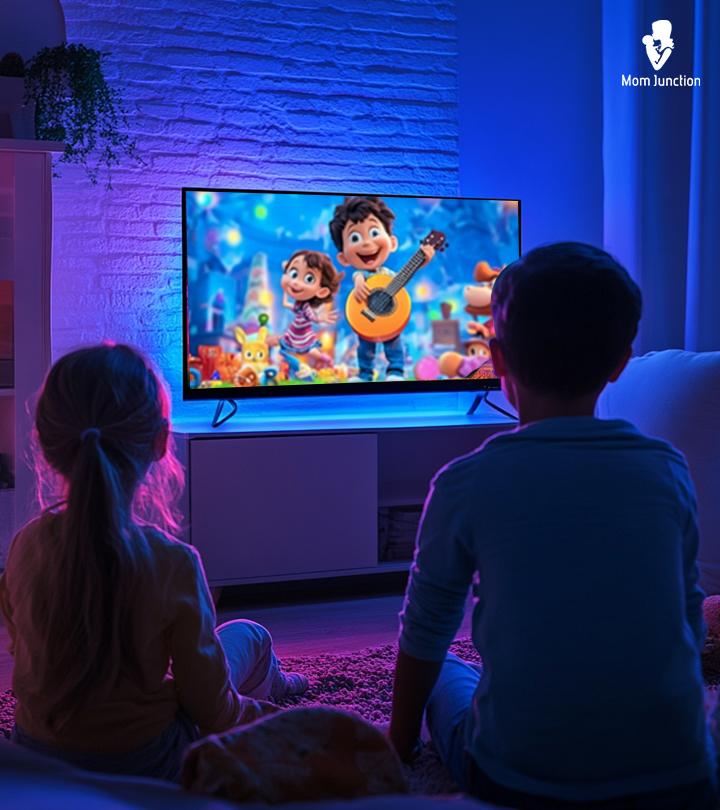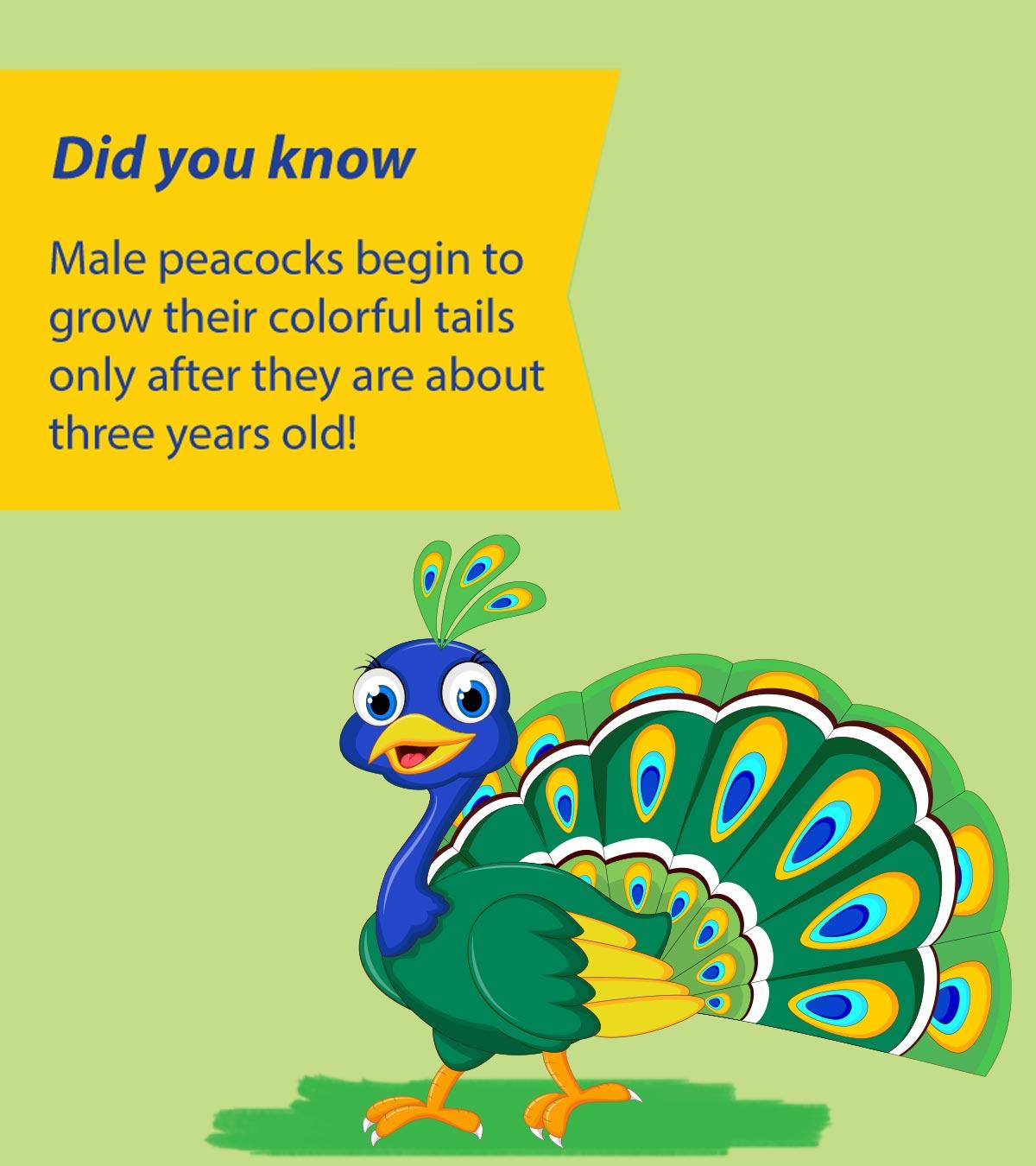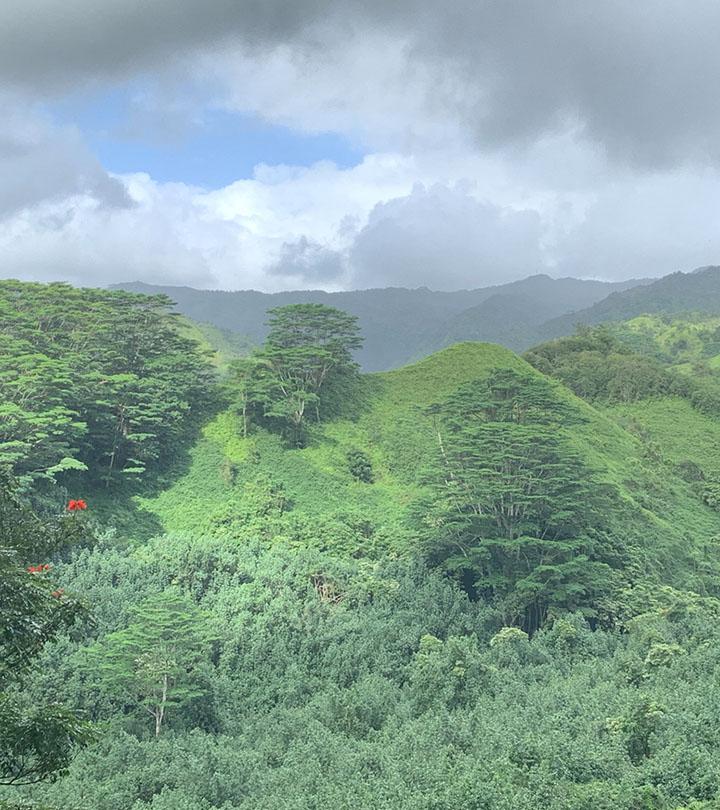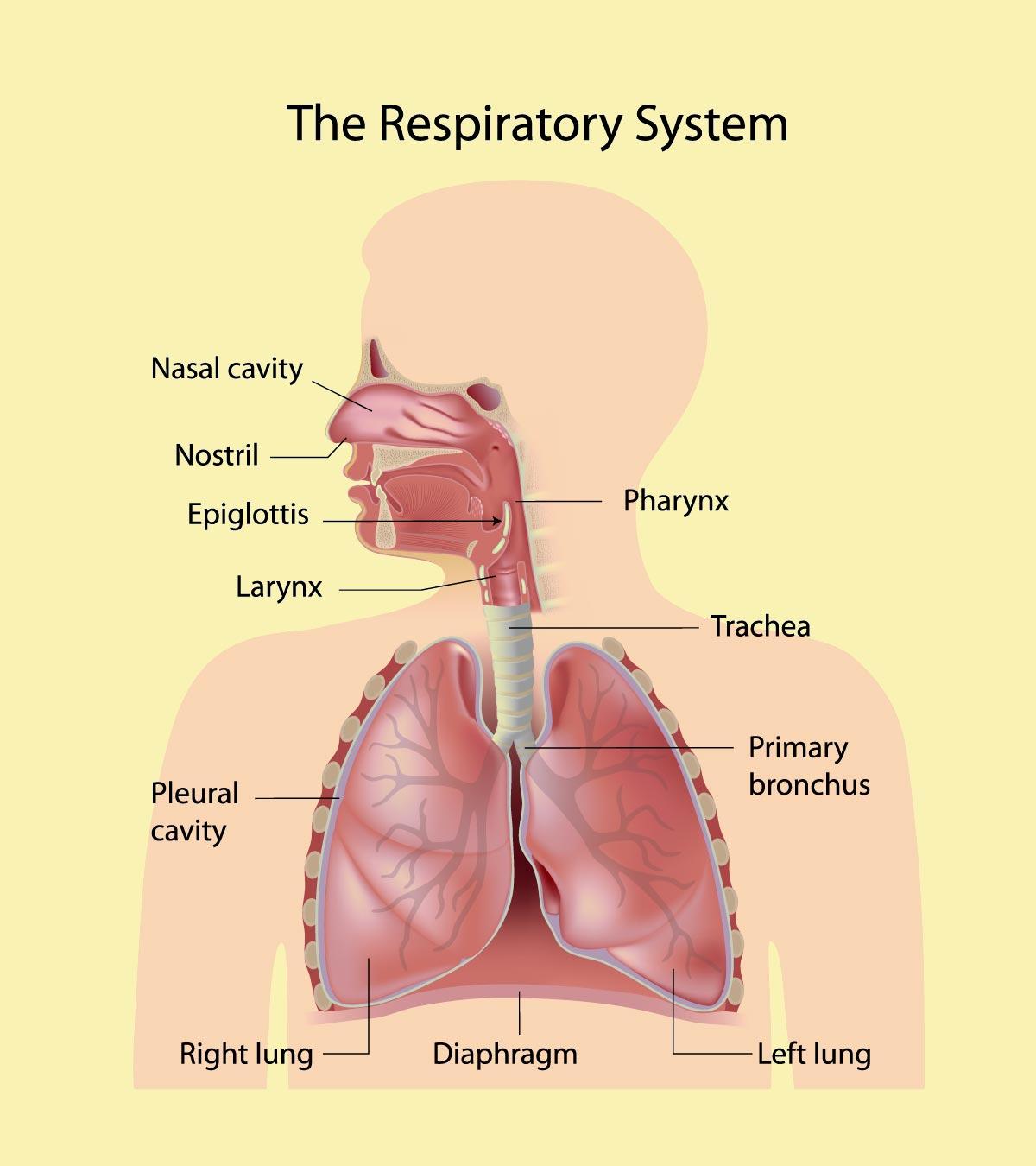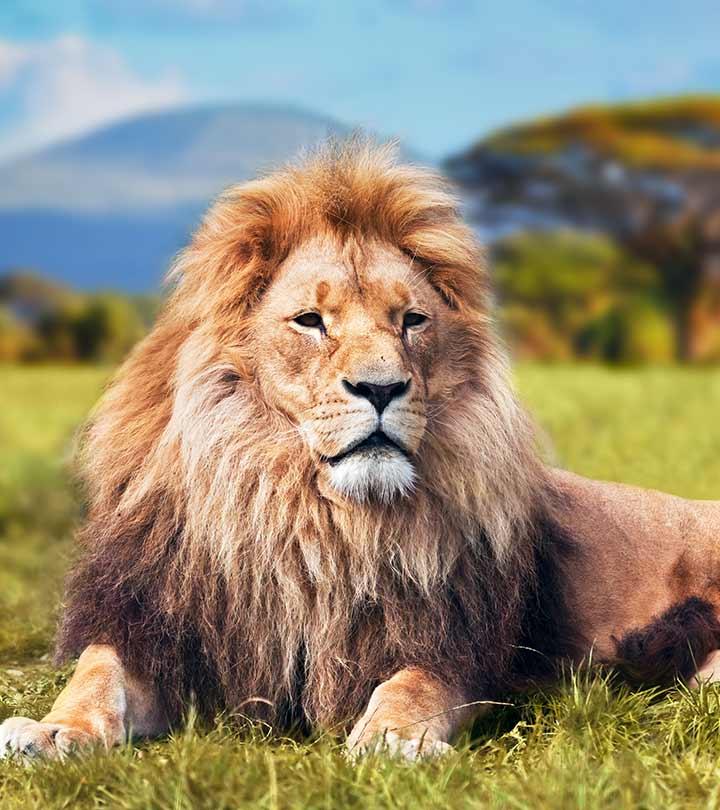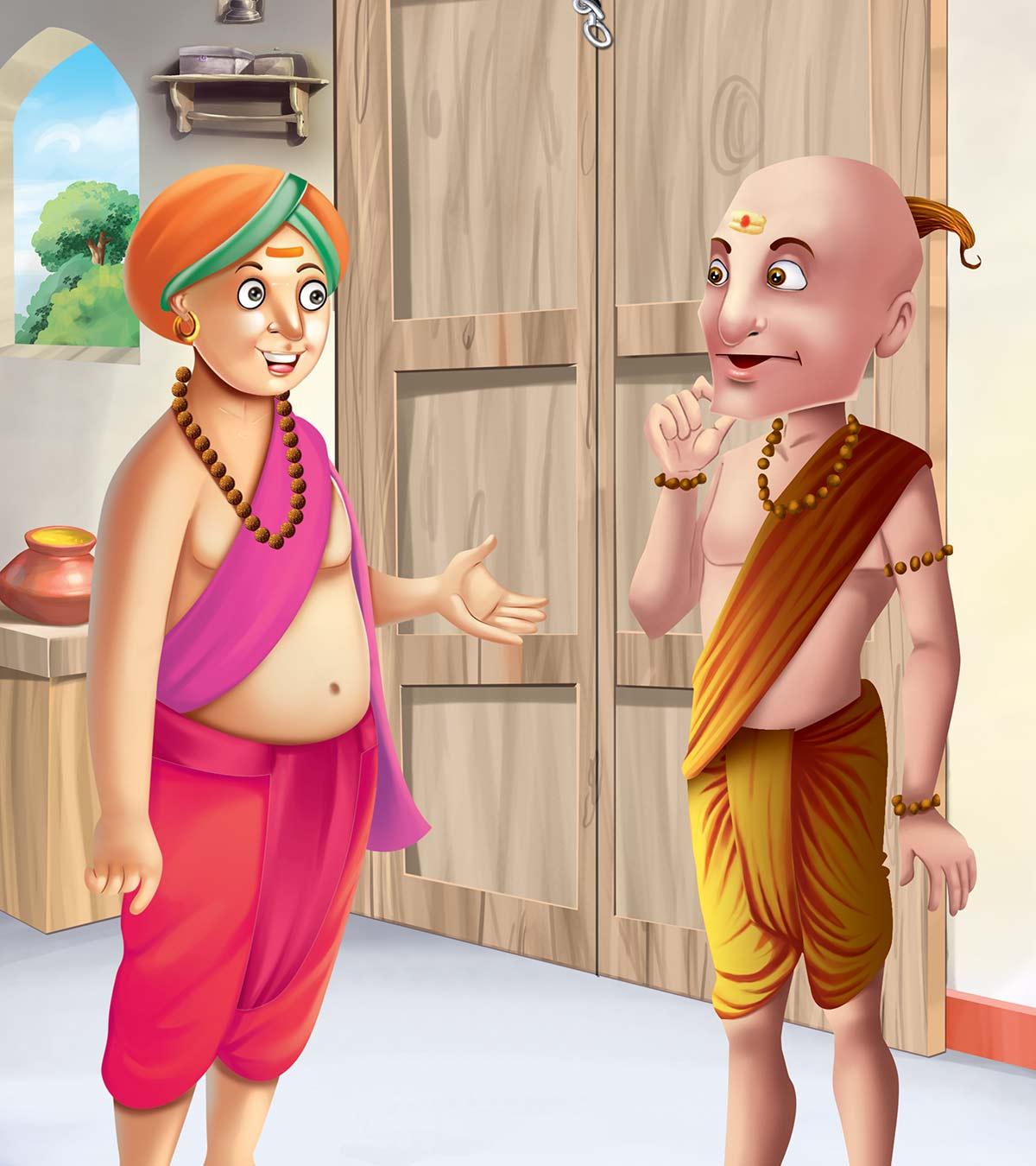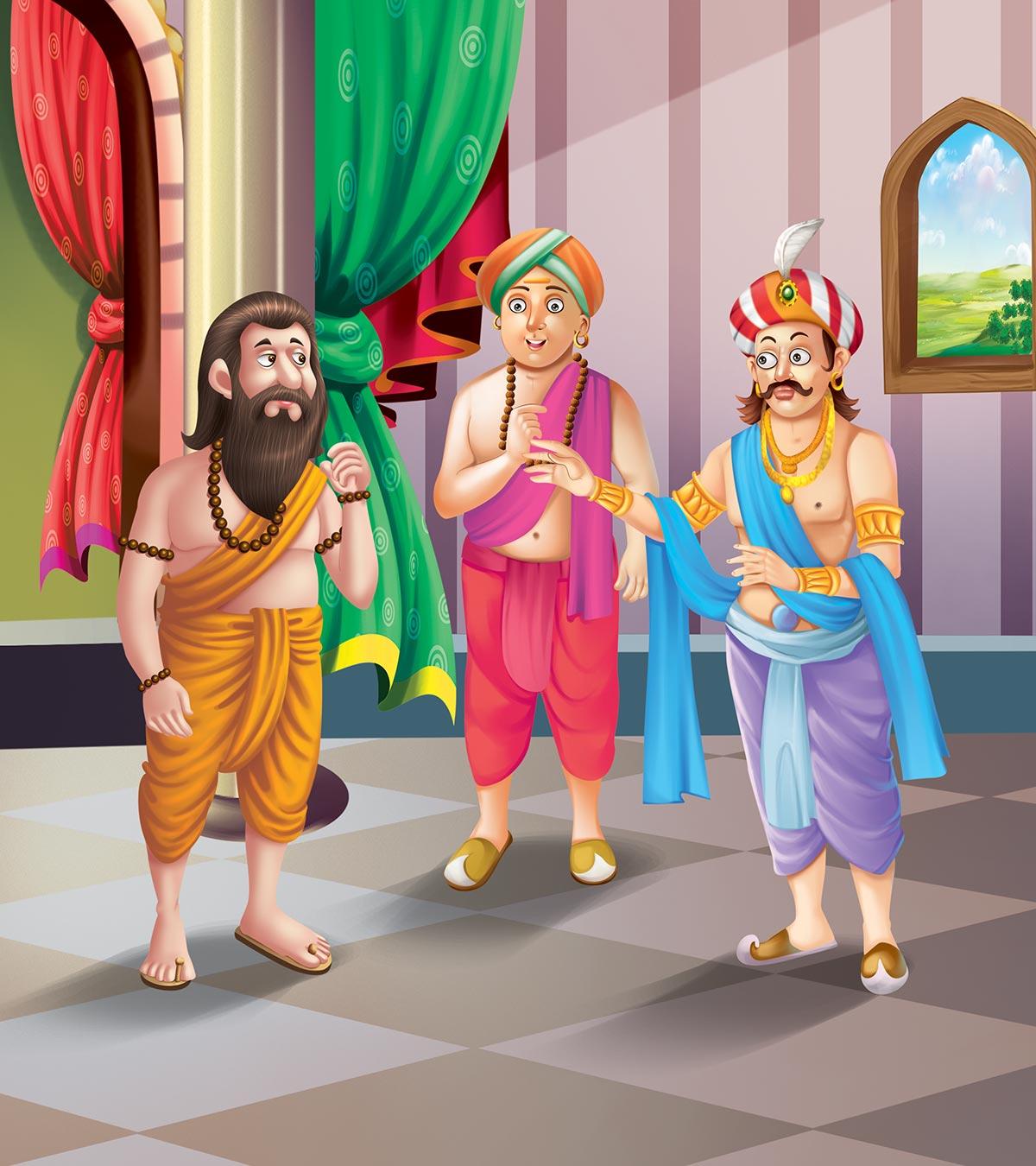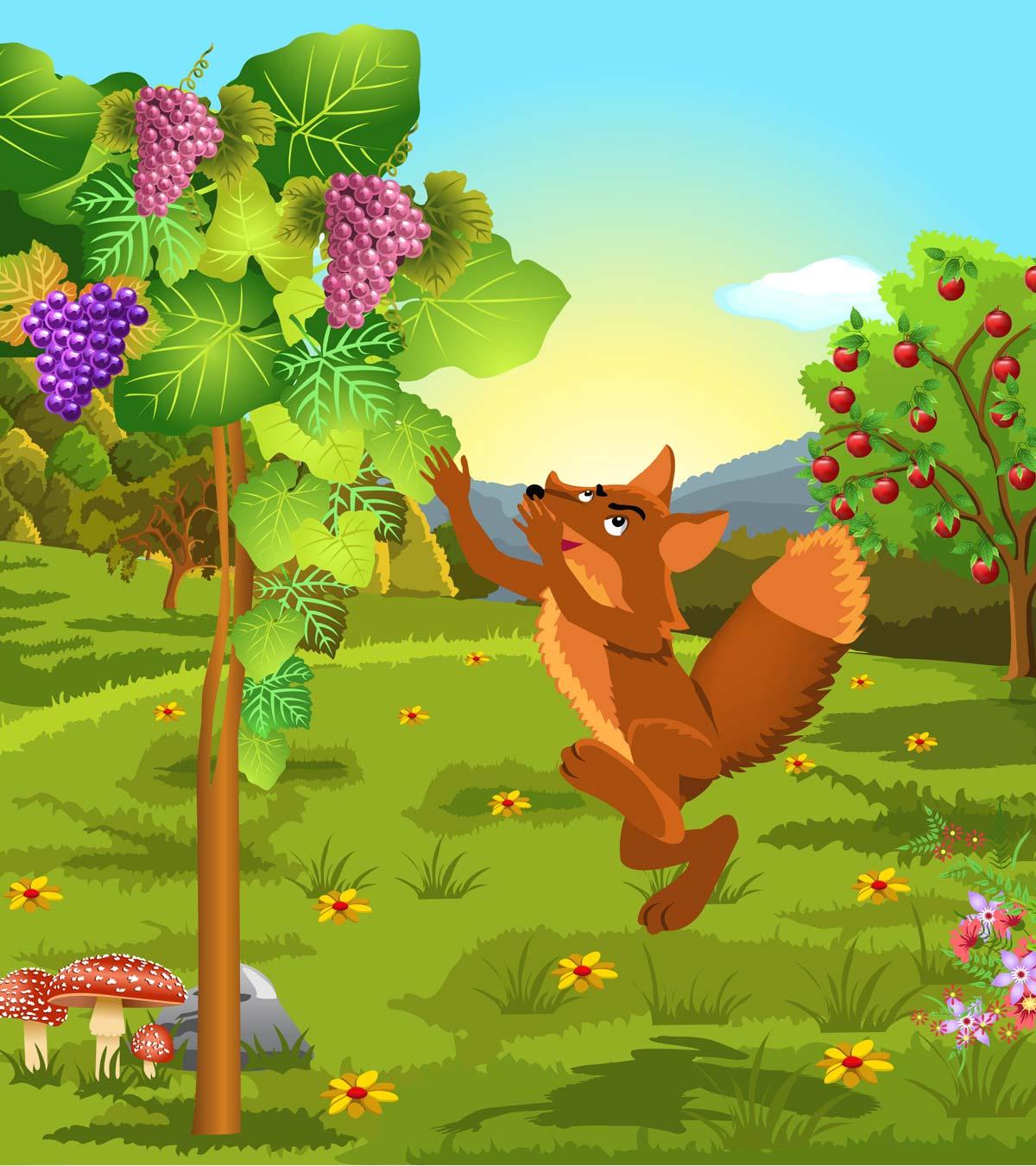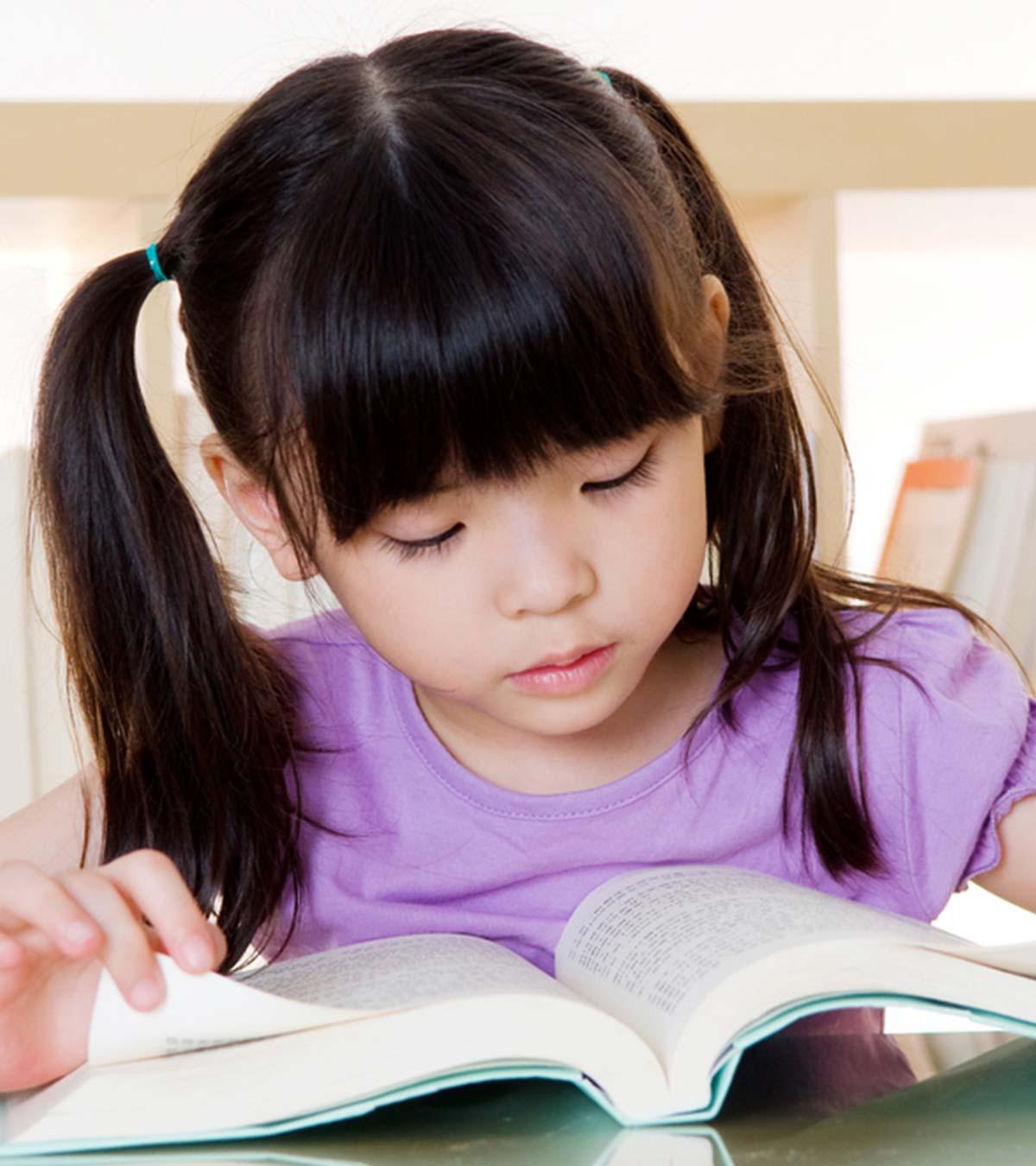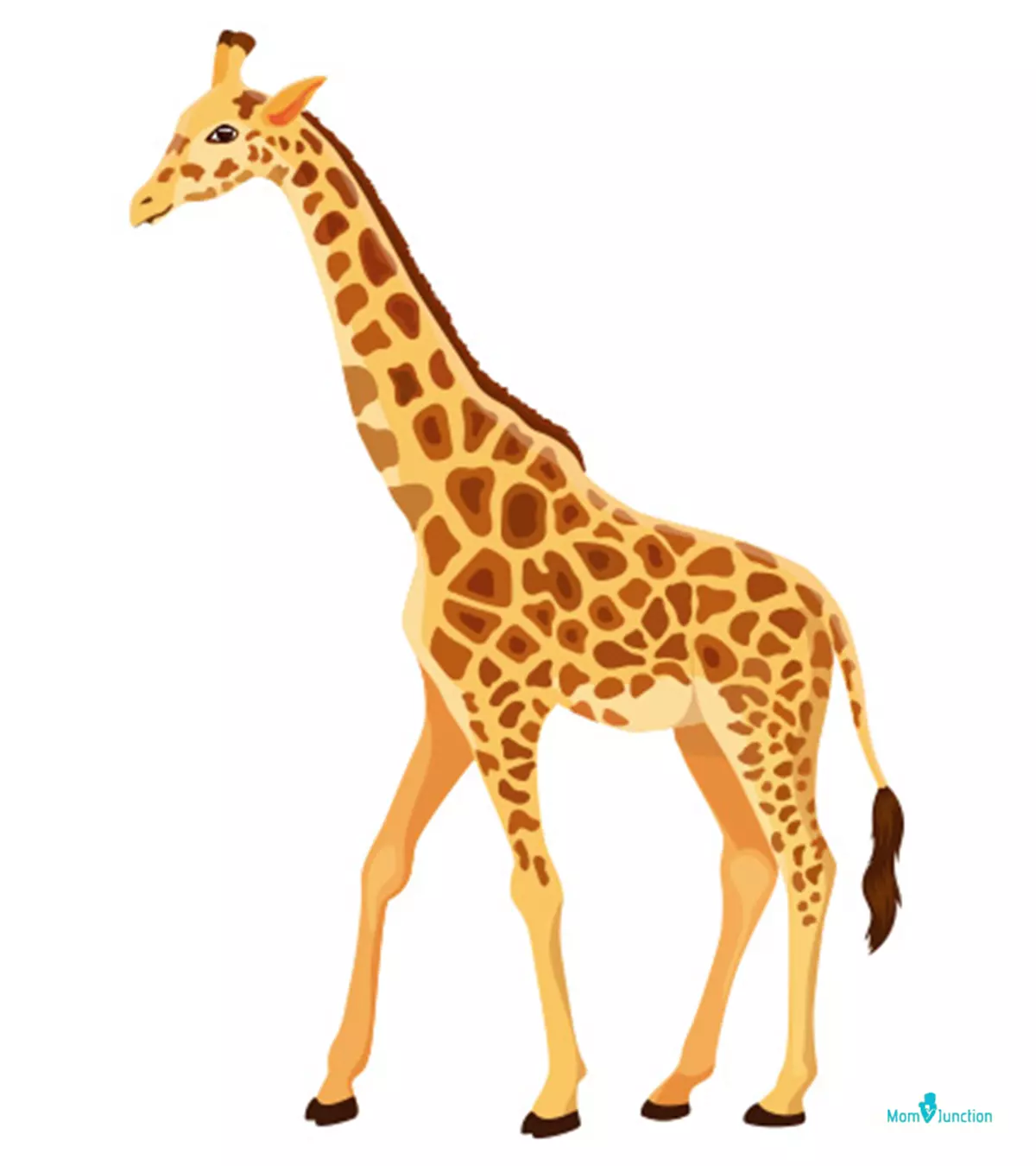
Image: iStock
Giraffes are beautiful animals that are sure to attract your child’s attention. Feed their curiosity by teaching them how to draw a giraffe. Giraffes are the tallest terrestrial creatures treading on earth, consuming hundreds of pounds of vegetation each week. A child can see different animals, including giraffes, in different cartoons. Thus, it is normal for them to visualize and replicate their thoughts on paper and paint a cute giraffe by themselves.
If this phenomenal creature attracts your children, they may enjoy drawing a giraffe for their next assignment. Here are 12 easy steps to draw a giraffe. Let’s get started.
For this fun activity, you will need:
- A pencil
- Non-toxic crayons
- Color pencils
- Watercolors
To add more texture and depth to the drawing, you may also choose charcoal or graphite pencils. However, those intense drawings can be achieved by consistent practice.
Key Pointers
- Follow the image and start by drawing the nose of the giraffe and then form an inverted U shape for horns.
- Add ears and eyes, and then draw the giraffe’s long neck.
- Doodle a curvy line from the top of the neck for the body. Draw an arch from the bottom of the neck, marking the beginning of the giraffe’s stomach.
- Draw freehand vertical lines for the hind and front legs and extend them into hook-like shapes for the feet.
- Include the giraffe’s tail and sketch tiny hair on the neck along with yellow-brown patches for a lively appearance.
How to draw a giraffe step by step?
Here are 12 easy steps to draw a giraffe.
Step 1: Start by drawing the nose of the giraffe drawing. As illustrated in the image, draw a freehand curvy line, curving slightly inwards at the end.
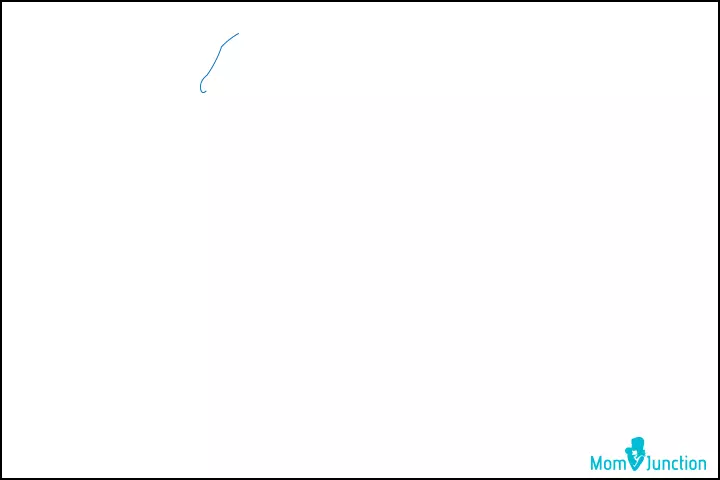
Step 2: Continuing from the first step, draw an inverted U like shape from the top, which is the horn of the giraffe. Stretch the continuing line at the bottom of the giraffe’s nose till it aligns with the horns.
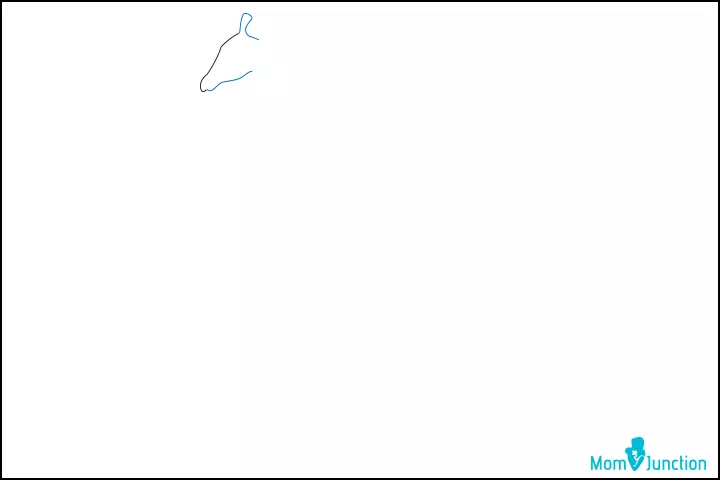
Step 3: Now add another horn, and draw the ear and eye of the giraffe as shown in the picture.
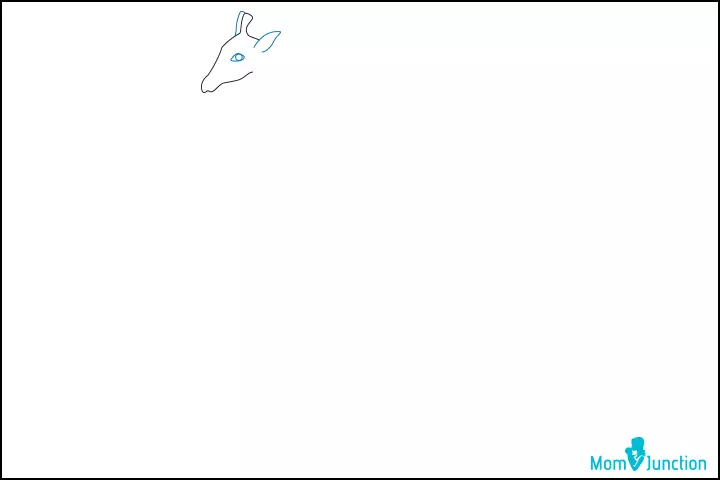
Step 4: Starting from the ear, draw the long neck of the giraffe and from the bottom, draw a parallel line widening towards the end.
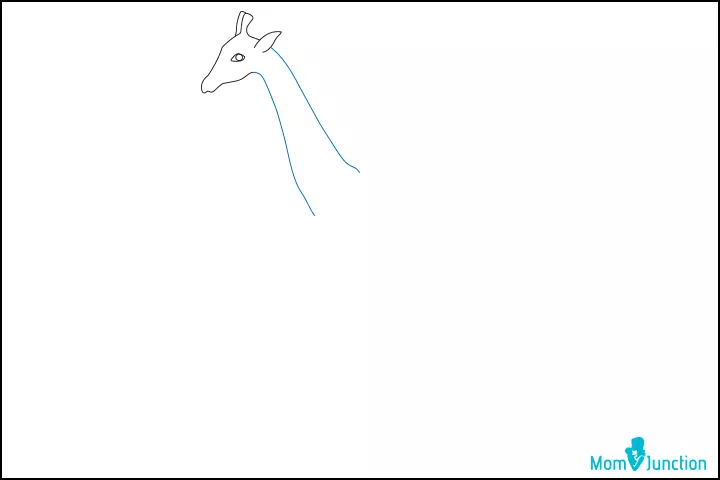
Step 5: In this step, we draw the body of the giraffe. Doodle a curvy line from the top portion of the neck and stretch it for about two inches. From the bottom of the neck, draw an arch, which is the beginning of the giraffe’s stomach.
 Quick Tip
Quick Tip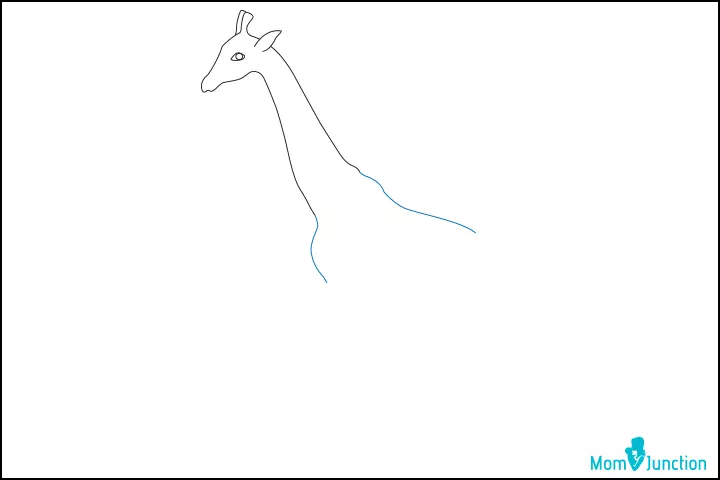
Step 6: Draw the hind and front legs of the giraffe by doodling a freehand vertical line, joining from the body in step-5. Let the two legs curve around the knees of the giraffe. To draw the feet, extend the two lines into a hook-like shape.

Step 7: As shown in the illustration, draw two lines to complete the legs of the giraffe and join them with a freehand horizontal line in between, to make the stomach. Draw another leg in the front, leaning forward.
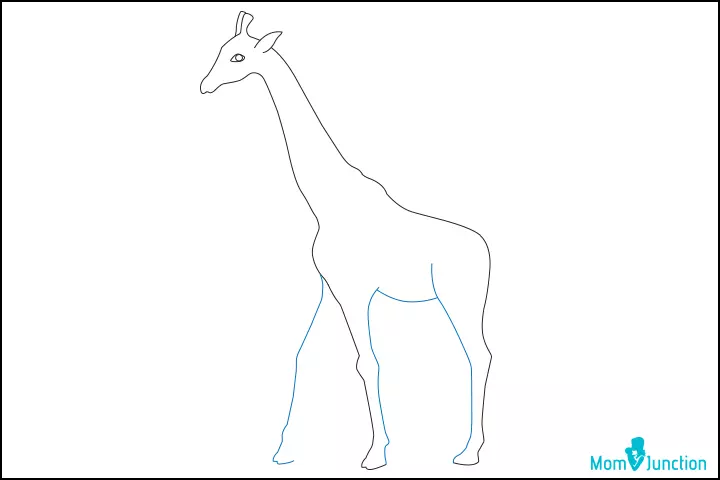
Step 8: Complete the front leg and foot as shown in the image. To draw the other hind leg, start sketching a line from the bottom of the stomach and align another line joining from the left hind leg. Follow the detailing of the feet to match with the illustrations.
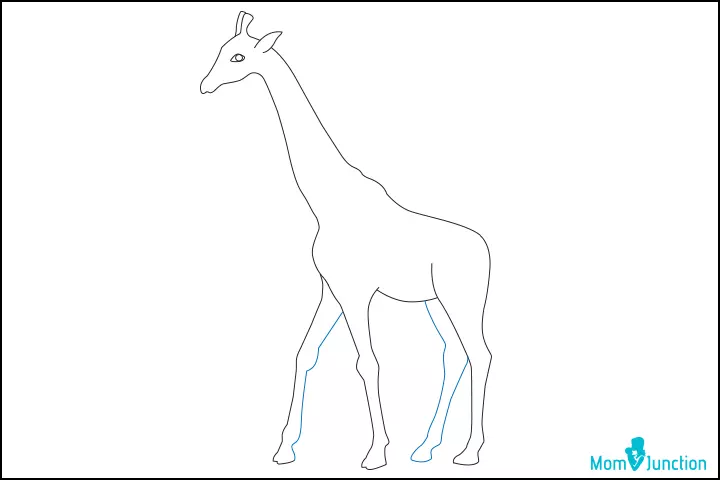
Step 9: Draw the giraffe’s tail, and to give your drawing an authentic appearance, sketch tiny hair on the neck. Refer to the illustration.
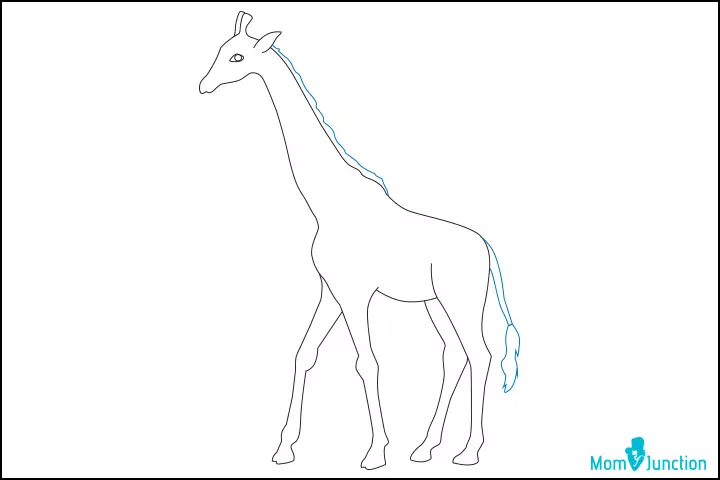
Step 10: The giraffe’s drawing is incomplete without the beautiful patches. Sketch the patches on the body, covering the neck, face, stomach, legs and the tail.

Step 11: Before you proceed to color your giraffe, check for any changes if required and then finalize the draft.

Step 12: In the final step of this cute giraffe drawing for kids, color the body in yellow shade and patches in hues of brown.
 Quick Tip
Quick Tip
This is among the easy ways to draw a giraffe for your child. Additionally, you can also buy trace paper from the supermarket and give your little one photographs of their favorite animals. They can place them below the tracing paper and draw an outline of the animal. Afterward, if they want, they can color it too. With practice, your child may unleash their creativity and try to etch, sculpt, or even carve out their favorite animals.
Frequently Asked Questions
1. What are some common mistakes to avoid when drawing a giraffe?
In order to get a more realistic representation of the giraffe, it is important to consider the proportions in which the giraffe is drawn, the way the spots are placed, the colors added, and the way textures are depicted in the drawing. A few common mistakes may occur in drawing the shape of the head, the positioning of the legs, the eye placement, and in the neck-to-body ratio.
2. What are some creative ways to incorporate a giraffe drawing into an art project or larger composition?
A few creative ways to incorporate a giraffe drawing into an art project or larger composition include making a collage or a mural using eye-catchy materials and colors, printmaking using a cutout and combination of colors, digital art, fabric wild scape, doodles, mixed media, and
3. How do I add shading and texture to my giraffe drawing?
To make your giraffe drawing look more realistic, use different grades of shading pencils to create shadows and highlights. Study the texture of a giraffe’s fur and draw short lines or dots to replicate it. Layer the lines or dots to add depth and make the drawing look more detailed.
4. What are the key features of a giraffe that I should focus on when drawing?
When you draw a giraffe, remember to emphasize its long neck and legs, the special pattern of spots or patches on its body, and the shape of its head with the horn-like ossicones. These important features will help make your giraffe drawing look closely mirror the real one.
5. How do I make sure my giraffe looks proportional?
To make sure your giraffe looks right, compare the sizes of its different body parts, like the neck and legs. Look at pictures or use measurements as a guide to help you draw accurately. You may also use gridlines for easier adjustment of the proportions.
6. Can I use colored pencils or markers to draw a giraffe, or is there a specific medium I should use?
Yes, you may use colored pencils or markers to draw a giraffe, as they give you control and allow you to add color and details. However, you can also use other mediums like watercolor or acrylic paints, which allow you to layer and blend colors, creating a vibrant and textured giraffe drawing.
7. How can I encourage kids to practice and improve their giraffe drawing skills?
You can help kids improve their giraffe drawing skills by first providing them with the resources such as stationeries, tutorials, and easy step-by-step instructions with pictures. Additionally, you may make it into a game and explore different mediums to work on to maintain the excitement. After completion, give them compliments and suggestions to help them get better and create a positive atmosphere that encourages their creativity.
8. Can kids use their giraffe drawing as a starting point for a larger art project or story?
Yes, kids may use their giraffe drawing to create a bigger art project or story. They can build upon their imagination and develop storytelling skills by expanding on the initial drawing. Reading books or watching related stories may help spark their creativity.
Giraffes are attractive, and kids find them highly fascinating for their pattern and height. Teach your child how to draw a giraffe, as this rejuvenation activity will help your little one refine their skills and show interest in art from a young age. Make sure they are following the steps diligently to get the best result. The activity even helps them be engaged and expand their imagination and creativity using giraffe coloring pages as well. Once they are done, appreciate them and encourage them to draw more.
Infographic: Stepwise Guide For Children To Draw A Giraffe
Giraffes are enormous and long animals that walk on earth, and knowing about them would be a delightful experience for children. So, whether you’re teaching ‘G for Giraffe’ or just as an animal drawing, our stepwise tutorial in the infographic below can easily help children draw a giraffe.

Illustration: Momjunction Design Team
Illustration: How To Draw A Giraffe: Easy Step-By-Step Tutorial For Kids

Image: Dall·E/MomJunction Design Team
Community Experiences
Join the conversation and become a part of our nurturing community! Share your stories, experiences, and insights to connect with fellow parents.
Read full bio of Erin DeCarlo
Read full bio of Harshita Makvana
Read full bio of Deepa Thomas








